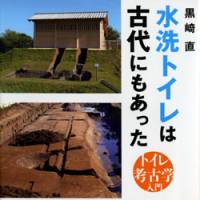Flush toilets are less a modern convenience than many people think, having been around since ancient times and research on those old privies can tell a lot about people's lives, according to a book published Monday by an archaeologist who specializes in lavatories.
The book, penned by Tadashi Kurosaki, a professor at the University of Toyama, highlights the latest research on toilet remains excavated around the country. It is titled "Suisen Toire wa Kodai ni mo Atta — Toire Kokogaku Nyumon" ("Flush Toilets Existed in Ancient Times — An Introduction to Toilet Archaeology").
"When you analyze the accumulated soil, you can see the diets and even the eating habits of the time," Kurosaki said.
The book provides a simple commentary on lavatory remains dug up in Japan and South Korea using illustrations and photographs.
It includes the hole-in-the-ground toilets discovered in the famous Koro guesthouse in Fukuoka Prefecture and the Fujiwara Palace in Nara Prefecture, the flush toilets of the Hojo Komachi residence in Kanagawa Prefecture, and the portable lavatories of the medieval period.
Kurosaki was first captivated by toilet archaeology when he excavated the late seventh century toilet remains at the Fujiwara Palace in Kashihara, Nara Prefecture, in 1992 while working at the Nara National Research Institute for Cultural Properties.
From the fish bones, vegetable and fruit seeds and parasite eggs found in the soil, Kurosaki surmised that the people at that time must have had a varied diet.



